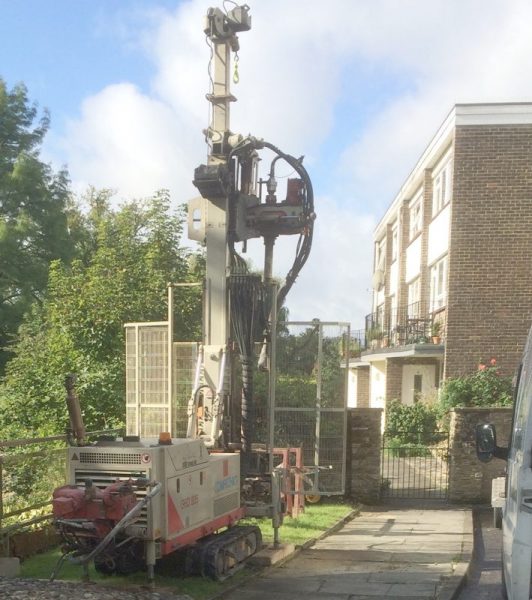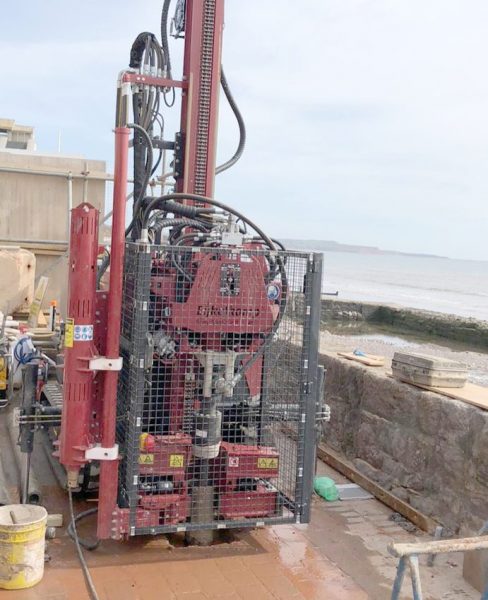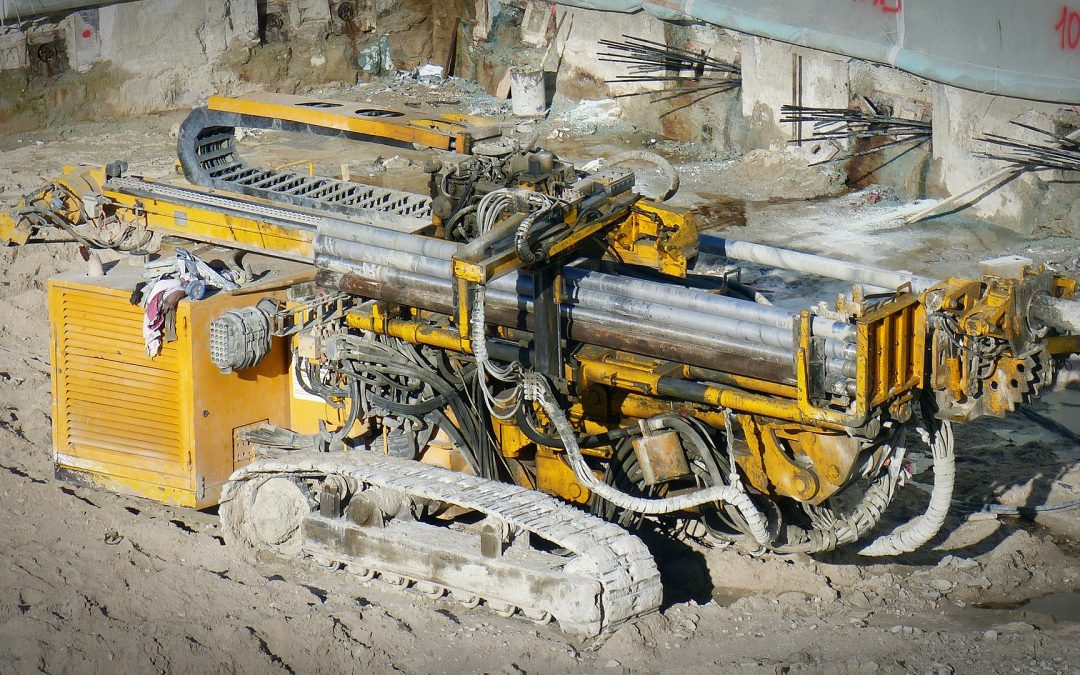The G&W Guide to… Sonic & Rotary Drilling
Geotechnical • Industry matters
Rotary and Sonic drilling is the “Waitrose” standard of the drilling world! Rotary core rigs sample up to Class A, drill through anything, to any depth and they can be used for Standard Penetration Testing (SPT) as well. Sonic rigs are safe, fast and incredibly good at undisturbed core recovery.
Rotary Core Drilling
The thing with rotary rigs, is the terminology associated with them can get a bit complicated. When sampling with these rigs, terms such as Geobor-S, Wireline, Water/Mist/Air Flush will be banded around. All these are variations on the same theme: tools and techniques to try to maximise the quality of core recovery.
Below are the typical details for the Commachio GEWO205 rotary core rig, which is widely used for Site Investigation. Rotary rigs go much bigger in size and spec.
 Specifications
Specifications
- Width: 0.75 – 1.15m.
- Working height/headroom: 4.67m
- Length: 2.729m
- Working Area: 6m x 4m plus. Needs an air compressor, tools and a water bowser.
- Trackable height: 1.5 – 2.0m
- Needs a generally flat and level surface.
Capabilities
- Gravel/Clay/Rock – Whatever your design requirements are. The deeper you go, the bigger the rig gets; or the more time it takes to get to depth.
Strength Testing
- SPTs and rock cores for Unconfined Compressive Strength Testing.
The Pro’s & Con’s
Rotary rigs are expensive, but it’s not surprising given their need/ability to drill through solid rock. They also require a fair bit of associated kit; compressors, mud-puppies (to keep things clean) and occasionally, water bowsers. As a result they can involve a fair amount of logistics and transport to get them operational on site.
Also, if they are being used for open hole boring they can make quite a mess, with smashed bits of rock and soil flying everywhere.
Rotary rigs can bore 10 – 12m a day if being used as part of a Site Investigation. I.e. Sampling and testing.
However, the key benefit of a rotary rig is it can recover Class A samples, which are the best quality and will yield the best geotechnical data. You can also be assured that the rig will get to depth, no matter what lies under the surface.
Sonic Drilling
To the untrained eye, a sonic drilling rig probably looks similar to a rotary core rig.
Vibrations emanating from drilling head have liquifying effect, loosening the surrounding soil structure allowing for core recovery.
Benefits
Sonic drilling rigs are very safe and fast (they get to depth fairly quickly). They are clean and produce up to 80% less waste than other types of rig.
Sonic rigs can be incredibly good at undisturbed core recovery and it’s worth reading our sample disturbance blog to understand the impact of sample disturbance on gaining accurate data. The G&W Guide to… Sample Disturbance

As little as 1% deviation is possible with a sonic rig, but performance does deteriorate in low strength cohesive deposits, probably due the effects of resonance.
In a meter for meter comparison with other drilling methods, a sonic rig is more expensive. But with that increase in cost to the client, comes an overall program reduction with less days on site and less mess. So using a sonic rig may be more attractive in the long run.
The Ground & Water Approach
Ground & Water only uses selected and trusted drilling contractors. This keeps any risk to a minimum and we always have an experienced engineer available to supervise sampling and testing when or where it is necessary. This means our engineers can ensure the data we gather from any type of bore hole is the very best it can be.
